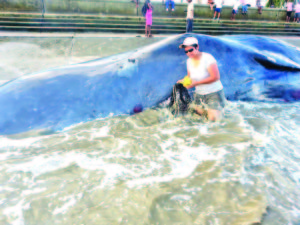The Oil and Gas sector has its advantages and disadvantages. One of the major disadvantages is the widespread destruction to the environment an oil spill can cause. According to a notable environmental activist, Guyana’s safeguards against an oil spill still leave much to be desired.
According to long time conservationist Annette Arjoon, there is still no comprehensive national oil response plan. This is even as ExxonMobil’s commercial production of oil is slated to begin two years from now.




